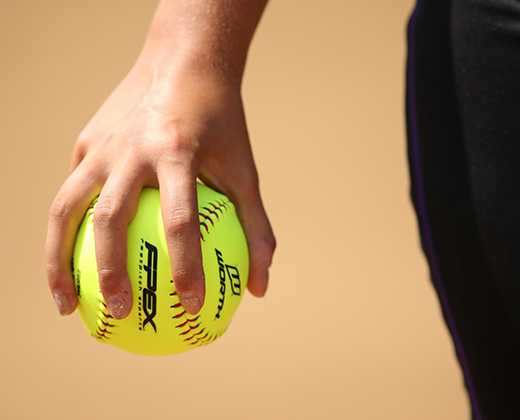Softball Throwing Tips: The Throwing Progression
Learn the necessary steps to warming up your arm with these softball throwing tips.
To perform at your full potential, you need to take the proper warm-up steps prior to action. A proper softball throwing progression can help get your body ready for the day ahead.
There are multiple layers to a successful throwing program. To complete your progression, you must master the five varying throwing steps.
STEP ONE
Begin your throwing progression by facing your throwing partner with your chest. Stand relatively close; you don’t want to jump right into throwing long distances. From there, flick the softball to your partner, using only your wrist to cover the ground. Think of throwing the ball like you would throw a dart.
STEP TWO
Your next step in this multi-layered softball throwing drill is your non-striding throw. Increase the distance between your throwing partner. Align your hips and shoulders as you would with a normal toss. As you throw back and forth, remember to keep your feet planted. You may lean back for some momentum, but nothing more.
STEP THREE
Once you’ve completed a few non-striding throws, go ahead and stretch the distance more. You should then take a step toward your target, close off your shoulders, line up your hips and deliver a strike. Repeat this one-stride throwing drill for a few rounds before moving on.
STEP FOUR
The next step in your throwing progression will have you advance from a single stride to a small shuffle. Gradually work your way back a few steps to increase your throwing distance. For your shuffle, take your first step with your leading foot. Follow it by bringing your feet together and apart as you gain ground.
STEP FIVE
The last layer to your throwing progression for softball is your long-toss phase. This is the longest distance you’ll throw in the entire program. Be sure to use your body for momentum, take quick steps on target and drive your legs through your release. While long toss is the farthest you’ll throw, be mindful of your limits. If you need to throw the ball high in order to cover the ground, have your partner move in. You want to work on making low-flight tosses, as these are more desirable in the game.
Including a proper throwing progression in your practice plan can help you make sure you’re ready to perform at your best. Use these helpful tips to work your way from toss to triumph.








